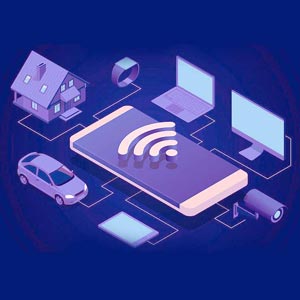THANK YOU FOR SUBSCRIBING

How Radio and Broadband are Evolving to Bring New Benefits to Australia's First Responders
Con Balaskas, Managing Director and Vice President, Motorola Solutions Inc.


Con Balaskas, Managing Director and Vice President, Motorola Solutions Inc.
The classic, black two-way radio has long been a feature in movie car chase scenes between police officers and felons. It’s always a good indication that the action is about to tick up a notch when you see the officer make a call for urgent backup to the command centre.
The public safety sector refers to its radio communications as being mission-critical. That’s because it needs to work reliably and securely at all times and be instantly available to them as they complete their essential daily work.
Two-way radio communications systems continue to be the ‘go-to’ communications technology for first responders and other essential frontline workers, both for everyday use and especially in times of emergency.
Radio communication has featured in many iconic moments throughout history too. For example, the words ‘That’s one small step for man, one giant leap for mankind’ spoken by astronaut Neil Armstrong were broadcast on radio communications technology back in 1969.
Although land mobile radio technology has been in existence for around 100 years, it continues to provide essential (and often lifesaving) support for the public safety industry and other sectors, such as mining, where safety is non-negotiable.
During bushfires, floods, and other natural disasters in Australia, public safety and rescue personnel–often working across state borders–communicate through devices connected to government radio networks (GRNs) to share important, real-time information as emergencies unfold.
How Radio Compares With Consumer Communication Networks
Many of us have experienced the frustrations of interrupted or unavailable communications and data access that can sometimes occur with cellular networks.
It’s important to remember that although consumer-grade technologies continue to improve, the consequences of citizens experiencing interrupted communications are rarely as significant as it is for public safety agencies to be without them. The private radio systems used by first responders are designed to withstand the most severe conditions and to ensure that priority is always given to essential users. And when infrastructure becomes damaged or unavailable, these systems provide failovers and redundancy to maintain constant connectivity.
This includes hardened infrastructure, backup power and other attributes needed to withstand significant events, including bushfires and floods. The mission-critical land mobile radio (LMR) networks used by the public safety sector in Australia are implemented according to international standards to provide purpose-built communication for emergency services users. This helps to ensure that emergency call functions, high security and performance levels and a roadmap for future technology development are always maintained.
Other increasingly important factors that give mission-critical radio networks greater strength and resiliency include ongoing investments by the communications industry and organisations, including Motorola Solutions, to enhance cyber security and digital encryption.
Greater convergence with broadband
Although radio communication is a long-established technology, ongoing investments and research and development efforts are helping to ensure it continues to evolve.
Technologies including 4G and 5G are having a profound impact on how people and industries connect and communicate around the world, and increasingly, we’re seeing greater convergence and integration between mission-critical communications and broadband technologies. Earlier this year, Western Australia Police recently made history by becoming the first police force in the world to make essential workflow information from public emergency calls available through CarPlay via a partnership with Apple and Motorola Solutions. The police force uses a broadband-enabled software solution in parallel to their mission-critical voice communication system to stay safe and connected while working on the frontline.
This kind of iterative innovation means that first responders can increasingly use familiar consumer devices such as smartphones alongside their two-way radios.
In Australia, governments are developing plans to adopt more mobile broadband-based applications and technologies for public safety. Used in parallel to today’s dedicated public safety radio networks, the increased adoption of broadband technology will help to progress faster and higher bandwidth communications and open up access to more data sources for emergency services.
Focus on Connectivity and Collaboration
Australian public safety organisations will continue to develop and upgrade their radio communication systems to future-proof them and–in tandem–invest in broadband solutions that extend voice communications and enable data-driven apps, including video and software solutions and services.
With greater connections between radio and broadband technologies in the future, first responders will experience improved collaboration and better-informed emergency response to major events, including natural disasters.
New digital platforms also continue to facilitate greater interoperability between radio and broadband networks to seamlessly connect public safety personnel. Emergency services can now quickly scale their networks to accommodate more users and connect field personnel to different agencies and support staff across thousands of kilometres, regardless of the kind of communication devices they use.
As part of a holistic package of technology investments to improve firefighting safety and efficiency, the New South Wales government has also deployed operational vehicles equipped with both WiFi “hubs” and the ability to connect to satellites when responding to events in rural and remote areas. This technology not only extends the reach of mission-critical voice communication but highlights how the further convergence of radio communications and broadband technologies is helping emergency services to work more safely and efficiently. This technology has supported successful search and rescue missions by many public safety agencies. The New South Wales State Emergency Service are among the agencies to have used it to provide extended communication between partner agencies, first responders working in remote search grounds and its State Operations Centre.
Many of the most advanced radio devices available today combine voice and broadband technologies to enhance situational awareness and safety. Apps can include interactive maps with first responder locations to coordinate responses, multimedia messaging to share pictures and videos and GPS location information that updates every few seconds and can automatically trigger alerts when needed.
The evolution of two-way radio and broadband technology will continue to develop simultaneously. By combining a greater range of data sources alongside reliable voice communication, Australia’s first responders can work more safely, improve their awareness during major incidents and, ultimately, provide better protection for our communities.
The classic scenes we’ve seen in so many movies of police officers reaching for their trusty two-way radios will endure. In the future, we can also expect to see first responders benefiting from greater collaboration and communication between broadband and radio technologies in order to perform their life-saving work.












